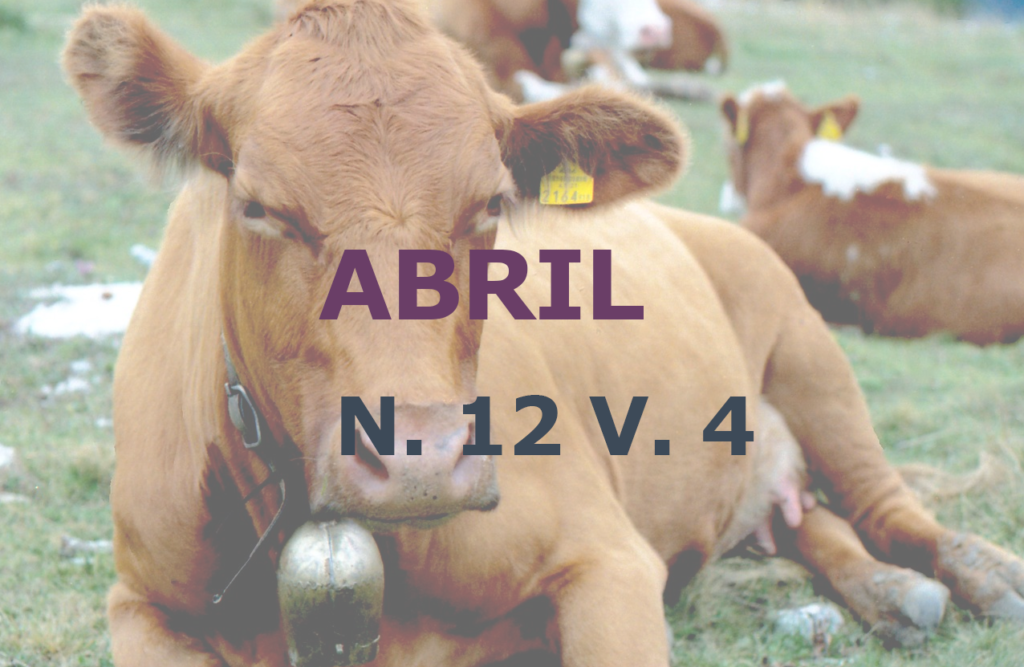Produtividade de cultivares forrageiros no nordeste brasileiro
DOI:
https://doi.org/10.22256/pubvet.v12n4a70.1-9Palavras-chave:
Biomassa, braquiária, bromatologia, panicum, qualidadeResumo
Com o objetivo de se avaliar e selecionar forrageiras adaptadas ao ecossistema agreste, foram avaliados 4 cultivares da espécie Panicum maximum (Mombaça, Milenio, Tanzânia e Massai) e 3 cultivares de Urochloa brizantha (Xaraés, Marandu e Piatã). Os experimentos foram conduzidos na Universidade Federal de Alagoas/Campus Arapiraca em um delineamento inteiramente casualizado com três repetições em parcelas de 4,0 m². As cultivares de U. brizantha foram semeadas à lanço no campo experimental e quando as plantas atingiram cerca de 30 cm foram colhidas a 15 cm. As cultivares da espécie P. maximum foram postas para germinar em bandeja contendo substrato agrícola comercial e posteriormente foram transplantadas para a área experimental e foram colhidas de acordo com a altura de cada cultivar da seguinte forma: as cultivares Milênio e Mombaça foram cortadas com altura de 90 cm e resíduo de 15 cm; a cultivar Tanzania foi cortada com 70 cm de altura e resíduo de 30 cm e a cultivar Massai foi cortada com 50 cm de altura e resíduo de 20 cm. Após o corte as plantas foram separadas em lâmina, colmo + bainha e material morto e após secagem foram avaliadas quanto a produção de massa seca total, massa seca foliar, de colmos e material morto. Para as avaliações de produção um quadrado de 0,25m2 foi alocado aleatoriamente nas parcelas quando as plantas atingiram a altura de corte. Imediatamente após os cortes as plantas foram pesadas e separadas em lâmina, colmo + bainha e material morto, em seguida os componentes botânicos foram secos em estufa de ventilação forçada a 55ºC até peso constante. A partir dos resultados estimou-se a produtividaade. As avaliações bromatológicas foram realizadas no Near-infrared Reflectance Spectrocospy (NIRS) no Laboratório de Nutrição Animal da Embrapa Gado de Corte. Os resultados indicam que as cultivares Marandu e Xaraés (U. brizantha) e Tanzânia (P. maximum) são aquelas de maior produtividade no ecossistema Agreste.
Downloads
Publicado
Edição
Seção
Licença
Copyright (c) 2018 Mariah Tenorio de Carvalho Souza, Janaina Azevedo Martuscello

Este trabalho está licenciado sob uma licença Creative Commons Attribution 4.0 International License.
Você tem o direito de:
Compartilhar — copiar e redistribuir o material em qualquer suporte ou formato
Adaptar — remixar, transformar, e criar a partir do material para qualquer fim, mesmo que comercial.
O licenciante não pode revogar estes direitos desde que você respeite os termos da licença. De acordo com os termos seguintes:
Atribuição
— Você deve dar o crédito apropriado, prover um link para a licença e indicar se mudanças foram feitas. Você deve fazê-lo em qualquer circunstância razoável, mas de nenhuma maneira que sugira que o licenciante apoia você ou o seu uso. Sem restrições adicionais
— Você não pode aplicar termos jurídicos ou medidas de caráter tecnológico que restrinjam legalmente outros de fazerem algo que a licença permita.





